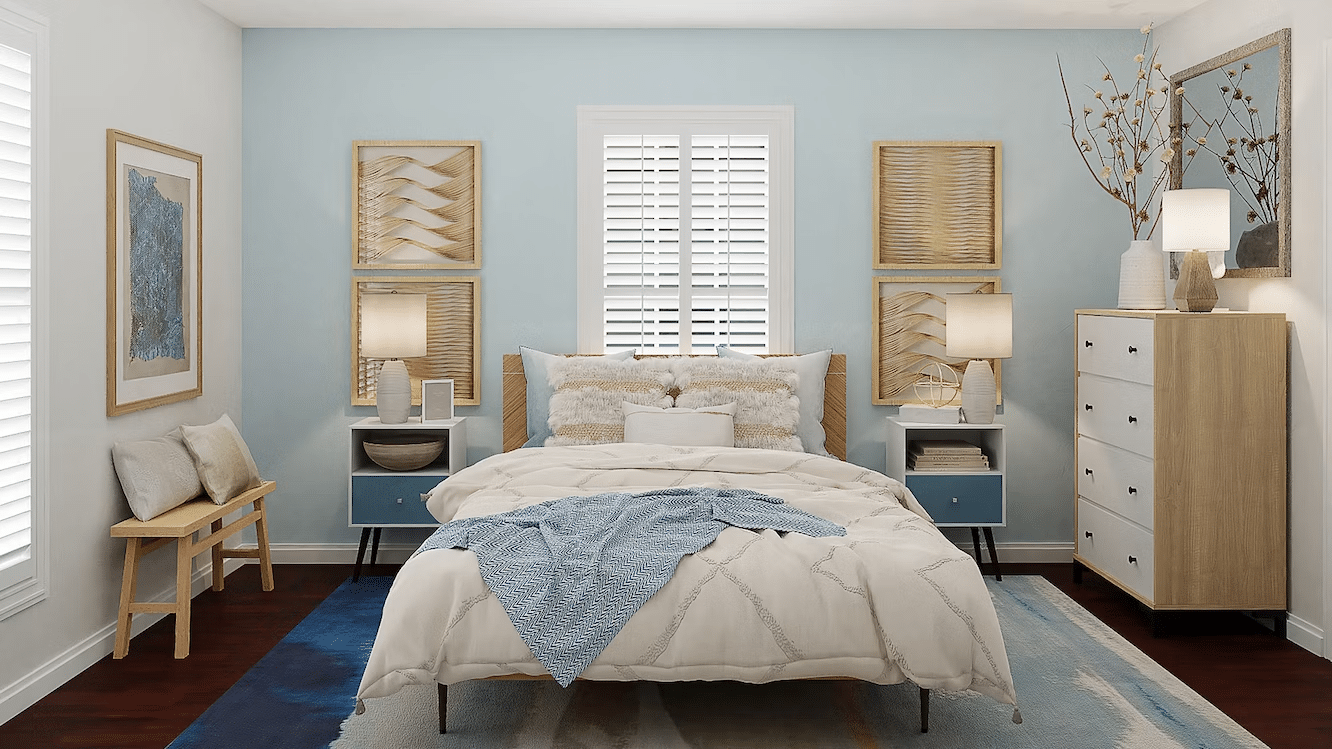Decorating your child’s bedroom can be an exciting and heartwarming experience for parents. It’s an opportunity to create a space that reflects your child’s personality, sparks their imagination, and fosters creativity.
If your child is a fan of the character Stitch from the beloved Disney movie “Lilo & Stitch,” then a Stitch-themed bedroom might be an amazing way to bring a splash of magic into their sanctuary.
Nevertheless, we will provide valuable tips and ideas to help you transform your child’s bedroom into a vibrant and inspiring sanctuary.
1. Involve Your Child in the Process
Before diving into decorating ideas, involving your child in the decision-making process is essential. Let them express their preferences and interests, making the space feel like theirs.
Consider their favorite colors, themes, hobbies, and characters when decorating items and furnishings. This collaborative approach ensures your child will feel a sense of ownership and pride in their bedroom.
2. Choose a Theme or Color Scheme
Selecting a theme or color scheme effectively ties the room together and creates a cohesive look. Whether it’s dinosaurs, princesses, outer space, sports, or nature, a theme can add excitement and spark your child’s imagination.
Alternatively, you can opt for a versatile color scheme that allows for flexibility in decor choices. Consider using a neutral base color and incorporating pops of vibrant colors through accessories and artwork.
3. Create a Functional Layout
Efficient use of space is essential when decorating a child’s bedroom. Plan the layout to accommodate various activities like sleeping, studying, playing, and storage. Consider incorporating multifunctional furniture like loft beds with built-in desks or storage compartments. Optimize floor space by using wall-mounted shelves or storage bins. A well-thought-out layout ensures the room remains organized and clutter-free.
4. Prioritize Safety
Childproofing the bedroom is paramount. Ensure that all furniture is securely anchored to the walls and that electrical outlets are covered. Choose non-toxic paints and finishes for walls and furniture.
Soften sharp edges with corner guards and use window treatments with child-safe cordless mechanisms. Also, ensure that the room is adequately lit and that night lights are placed strategically for added safety during the night.
5. Stimulate Creativity and Learning
A child’s bedroom should be a space that encourages creativity and learning. Consider incorporating a designated art corner with a small table and art supplies, a reading nook with a cozy chair and bookshelf, or a wall-mounted chalkboard or whiteboard for doodling and learning. Display your child’s artwork and achievements to inspire confidence and celebrate their accomplishments.
6. Personalize with Wall Decor
Wall decor provides an opportunity to add personality to the room. Removable wall decals or stickers to create a focal point or add themed elements. Frame and display your child’s artwork or photographs in colorful frames.
Consider creating a gallery wall with prints, quotes, and photos that reflect your child’s interests. Personalized wall decor adds a unique touch and makes the room more personalized.
7. Incorporate Storage Solutions
Children’s bedrooms often accumulate toys, books, and other belongings. Ample storage solutions are crucial to keep the room organized and clutter-free. Use labeled bins, baskets, or cubbies to store toys, and incorporate bookshelves or bookcases for easy book access.
Consider investing in the best single beds for kids that not only provide a comfortable sleeping space but also incorporate versatile storage features like adjustable shelves and ample drawer space. These adaptable storage solutions evolve with your children’s needs, allowing the shelves to transition from holding toys and dolls to accommodating books, school supplies, or homework as they grow older.
Consider using storage solutions within your child’s reach to encourage independence and
responsibility in tidying up.
8. Enhance Comfort with Textiles
Soft textiles add comfort and warmth to a child’s bedroom. Invest in quality bedding that is cozy and easy to maintain. Add throw pillows, cushions, and rugs in playful patterns and textures. These elements enhance the overall aesthetic and provide a comfortable space for play and relaxation.
9. Incorporate Age-Appropriate Lighting
Lighting is crucial when designing the ideal atmosphere for a child’s bedroom. Use natural light, ceiling fixtures, bedside lamps, and task lighting to provide ample illumination for various activities. Consider installing dimmer switches to control the brightness and create a soothing atmosphere at bedtime.
10. Embrace Flexibility
As children grow, their tastes and interests may change. Embrace the concept of flexibility in your child’s bedroom decor. Opt for modular or adjustable furniture that can adapt to their evolving needs.
Incorporate decor elements that can be easily updated or replaced as their preferences change. This approach ensures that the bedroom remains relevant and appealing throughout their childhood.
On A Final Note
Decorating your child’s bedroom is a delightful opportunity to create a space that reflects their personality, fosters creativity, and provides comfort.
Decorating your child’s bedroom is not just limited to the walls, the ceiling, or the floor. You could also give them something with their favorite superhero or character like a custom photo blanket or a custom pillowcase.
By involving your child in decision-making, prioritizing safety, and incorporating functional and age-appropriate elements, you can design a bedroom that your child will love and cherish for years to come.
With the tips and ideas in this article, you are well-equipped to embark on this creative journey and transform your child’s bedroom into a haven of joy and inspiration.








